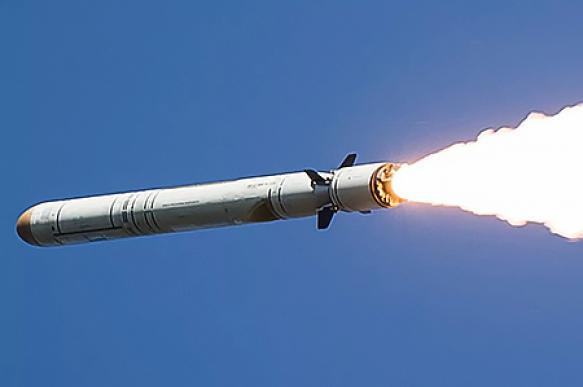Nuclear accident mystery: Burevestnik missile could explode under the water
Five Rosatom specialists and two Russian military men, who were killed during the mysterious rocket test at a range ground of the Russian Navy in the area of the village of Nenoksa, could have died when trying to retrieve a Burevestnik missile from the bottom of the Gulf of Dvina. Supposedly, it goes about the nuclear-powered Burevestnik missile that had sunk earlier during another failed test.

According to Radio Svoboda, there were containers found on floating platforms that were damaged on August 8 as a result of the nuclear incident. The containers are used to transport nuclear waste. It was also possible to identify a ship at the scene of the incident, which was supposed to retrieve sunken equipment from the bottom of the sea. The ship had already entered the Gulf of Dvina at least once in October 2018 - five days after the completion of tests on the marine range ground of the Russian Navy. All this information can be confirmed in open sources.
A curious photo of the pontoons in Nenoksa was published on a public page in VK social network. An analysis of the photo revealed that it depicts a standard 20-feet ISO container. A satellite photo, taken in the area of Nenoks on August 12, shows that there is another similar container parked on the same pontoon.
In a video from the Russian Defence Ministry that shows a Burevestnik missile being tested, one can see similar blue containers placed right next to the launch pad. The test was conducted in November 2017, supposedly in the area of the Yuzhny island of the Novaya Zemlya archipelago.
The same containers can be seen at the military training ground in Nenoksa. The containers were provided by Maxar Company, which was then called Digital Globe. Four blue containers have been standing here since 2012. The containers were there in May 2019, when a launching pad for the Burevestnik missile had been built on the range ground in Nenoksa. The infrastructure of the launching pad bears a striking resemblance to that on Novaya Zemlya archipelago.
Radio Svoboda thus concluded that the 20-feet blue containers are related to Burevestnik missile tests. Interestingly, Russian atomic companies use similar blue containers to transport radioactive materials and wastes. Blue is a corporate color of the Russian Agency for Atomic Power (Rosatom). This color is also used in Russia for containers of medical radioactive waste (Class В waste).
In late October 2018, Russia tested the Burevestnik cruise missile at the range ground near the village of Nenoksa. The test ended in a failure. Airspace over the range ground in Nenoksa was closed for several days in late October. The Serebryanka vessel could deliver the nuclear power unit for the test. The missile, the nuclear reactor and the malfunctioned launch stage thus fell into the sea not far from the coast.
In early August 2019, there was an attempt made to retrieve the missile from the bottom of the sea to subsequently dismantle it. The Serebryanka vessel arrived at the site of the operation again. The vessel was to take on board the nuclear unit of the missile. The Zvyozdochka ship was also there: the ship is equipped with cranes for loading containers on board the Serebryanka. Two special pontoons with containers for the nuclear part of the rocket were also provided for the operation.
The explosion of the missile fuel occurred under the water, as the missile was being lifted. The explosion damaged the reactor and emitted a certain amount of radionuclides typical of a reactor installation into the atmosphere. Several people on the pontoon were hurt in the explosion: they were nuclear physicists who were supposed to dismantle the reactor and pack it into the containers. Several military men and a military diver, who could probably be staying under the water, were also hurt.
The next day, the Serebryanka left the site of the accident as the reactor was destroyed and there was no need to transport it anywhere. The pontoons (one of them was damaged in the explosion) - were either abandoned at sea or towed closer to the coast. The release of radioactive substances into the atmosphere was insignificant and did not pose any health hazard to anyone.
The above is nothing but a theory that does not have any substantiative basis to it.
Subscribe to Pravda.Ru Telegram channel, Facebook, RSS!


